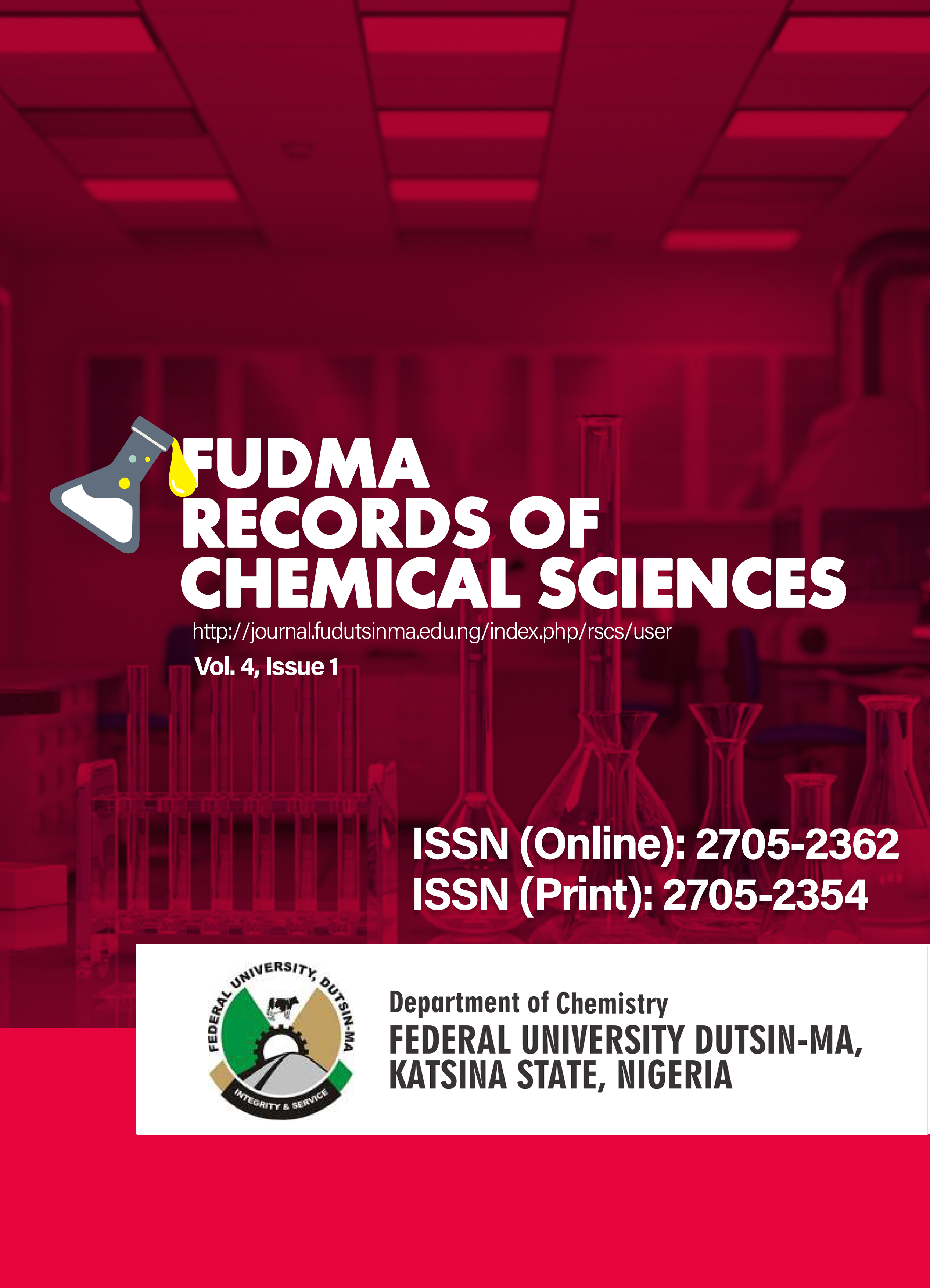Enhanced Trypanocidal Activity of Green-Synthesized Silver Nanoparticles from Gliricidia sepium Leaf Extract against Trypanosoma brucei brucei: an in vitro Study
DOI:
https://doi.org/10.33003/frscs_2025_0401/07Keywords:
Gliricidia sepium , Trypanosomiasis , Green Synthesis , Silver Nanoparticles , Antitrypanosomal Activity , Medicinal Plants.Abstract
Trypanosomiasis, caused by Trypanosoma spp., remains a major health and economic challenge, particularly
in sub-Saharan Africa. Current treatments are limited by toxicity, high costs, and emerging drug resistance,
necessitating the search for alternative therapeutic options. This study investigates the trypanocidal activity of
Gliricidia sepium leaf extracts and its green synthesized silver nanoparticles (G.s-AgNPs) against
Trypanosoma brucei brucei. Ethanolic extraction of G. sepium leaves was performed, and phytochemical
screening revealed the presence of alkaloids, flavonoids, tannins, terpenoids, saponins, and glycosides. Green
synthesis of silver nanoparticles was conducted using aqueous G. sepium extracts and characterized by UVVis spectroscopy, ATR-FTIR, SEM, and XRD analyses. The in vitro trypanocidal activity of the crude
extract and G.s-AgNPs was assessed using the drug incubation survival assay. Results demonstrated a
concentration-dependent trypanocidal effect, with G.s-AgNPs exhibiting superior efficacy compared to the
crude extract (G.s-AgNPs showed 95% reduction at 10 mg/mL, outperforming crude extract). The
nanoparticles significantly reduced trypanosome survival rates at lower concentrations, indicating enhanced
bioactivity likely due to improved cellular interaction and uptake. These findings suggest that G. sepium and
its silver nanoparticles hold promise as alternative trypanocidal agents. This study highlights the potential of
integrating medicinal plant extracts with nanotechnology to enhance trypanocidal activity. Further in vivo
validation is needed and toxicity assessments are also necessary to validate their safety and therapeutic
potential.






